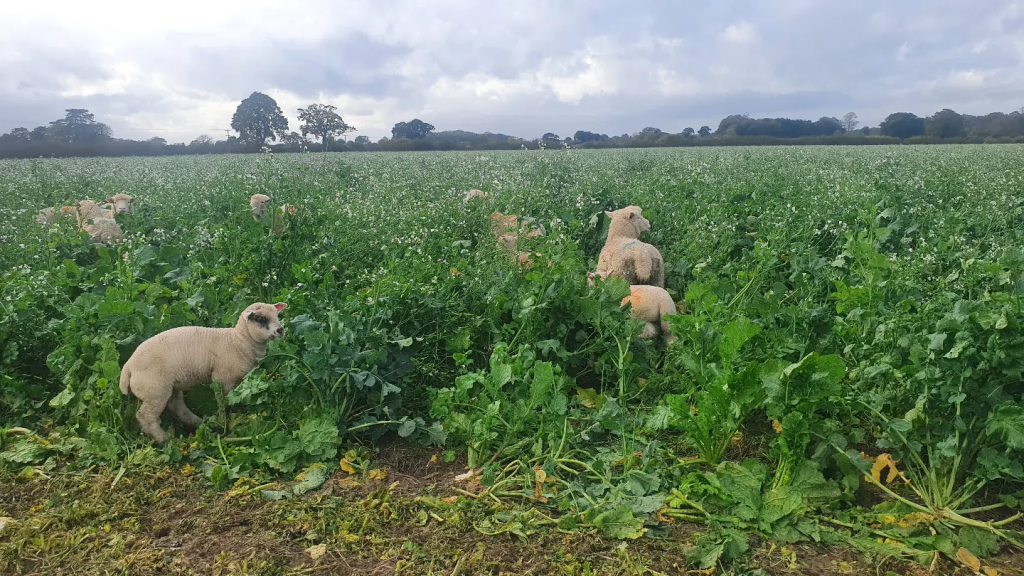January 2023
After a very easy and early harvest, followed by a few stressful weeks of unbelievably dry conditions when most drilling and land work was impossible, we finally had the autumn we had all been waiting for. For us the rain fell little and often from mid-September until the beginning of November, when the heavens opened. By then we had comfortably drilled a larger than usual spread of winter crops in pretty much ideal conditions. Casualties have been cover crops and early oilseed rape on heavy land, both of which we chose to plant a reduced area due to the drought in August and early September.
On a lighter block of land we did catch a single shower in late July, which allowed us to very quickly plant some cover crops after winter barley. These really suffered through August and early September, but they survived, and with such beautiful growing conditions in October they are now looking good, if a little brassica-heavy. The balmy autumn also allowed us to continue grazing marshes until 1st December, and leave the cover crops more time to bulk up. In September I was seriously concerned about how we would keep the livestock fed through winter, but the situation is now looking a lot more relaxed.
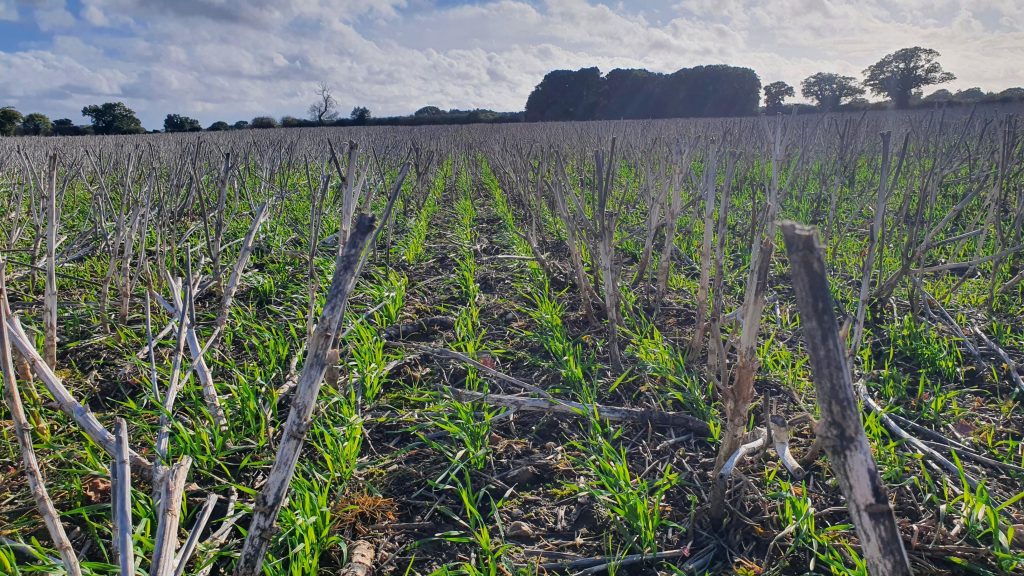
Long-term DD land has coped with the wet November very well and walks clean and firm. Any land that had been moved is now very soft indeed. Unfortunately, the dry autumn means there was very little chit pre-drilling, even by late October. Pre-em effectiveness has no doubt been compromised as well, so it does not look like the cleanest year. There was also no mole draining, as I felt the clay subsoil was not moist enough to hold a mole. However, we used the dry conditions to get some low disturbance subsoiling done on land which had historic compaction, which I hope will pay dividends.
I am a bit agnostic about the LD subsoiler. Last year we made one and used it to great effect on some “new” land which had been previously worked to death by a TopDown at 8” every year and was yielding very poorly. The top 8” were solid and airless like concrete, below that it was lovely. We used the LD subsoiler at 10”, then planted with a direct tine drill and had some fantastic crops, and have been able to DD the same land this year into lovely structure. So I think it is a great tool for the right situation, and particularly for land in conversion.
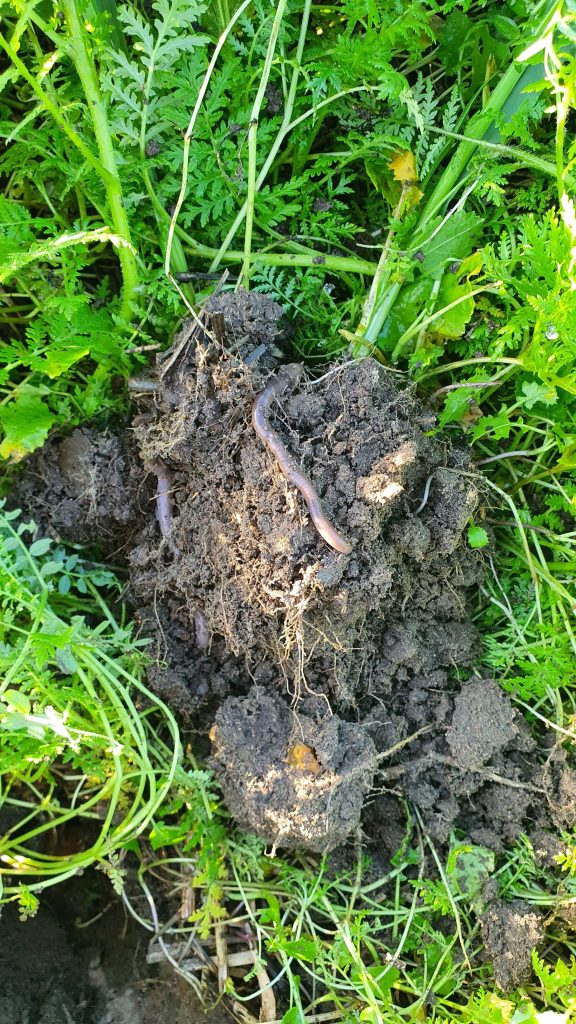
The success with the LD subsoiler was too great to ignore, so I have used it this autumn for some trial areas on long-term DD land which is yielding OK, but has plateaued somewhat. I really hope the trials do not prove to embarrass the untouched land, or it is going to really mess with my convictions (and my status at Direct Driller!), but I do think it is correct to constantly challenge everything, especially our own ideas. Ask me next summer how it went. I am generally pleased with my DD winter cropping, and spring beans seem to do well, but no-till spring barley does seem to underperform when the conditions are against it. I am in charge of some land which was in the last year of a sugarbeet contract, so we planted some spring barley into cultivated land after beet this year.
I have to admit it outperformed the DD stuff by a large margin, despite being on light land in a super dry year. Again, this is too much to ignore when barley is £275/ton! I have now stopped growing sugarbeet everywhere- even at £40/t I can’t bear the long-term soil damage I have seen from the heavy machinery in the middle of winter. But I do want to make spring barley perform consistently and talking to other DD’ers I am not the only one who finds this crop a particular challenge. So as a (fairly large) trial, we have broadcast cover crops and incorporated them with a shallow cultivation at about 3”, leaving a rough and slightly corrugated seedbed, with cover crop growing out of it.
I hope these corrugations will weather down over winter and give us some tilth to drill spring barley in to, rather than the rather flat, solid and cold surface we were getting from no-till cover crops. On one block we achieved this “cultivation” with a drill fitted with wide Bourghault VOS points, set deeper than normal and the harrow removed. On another we used a set of discs, and on another a TopDown. Again I will let you know how it goes.
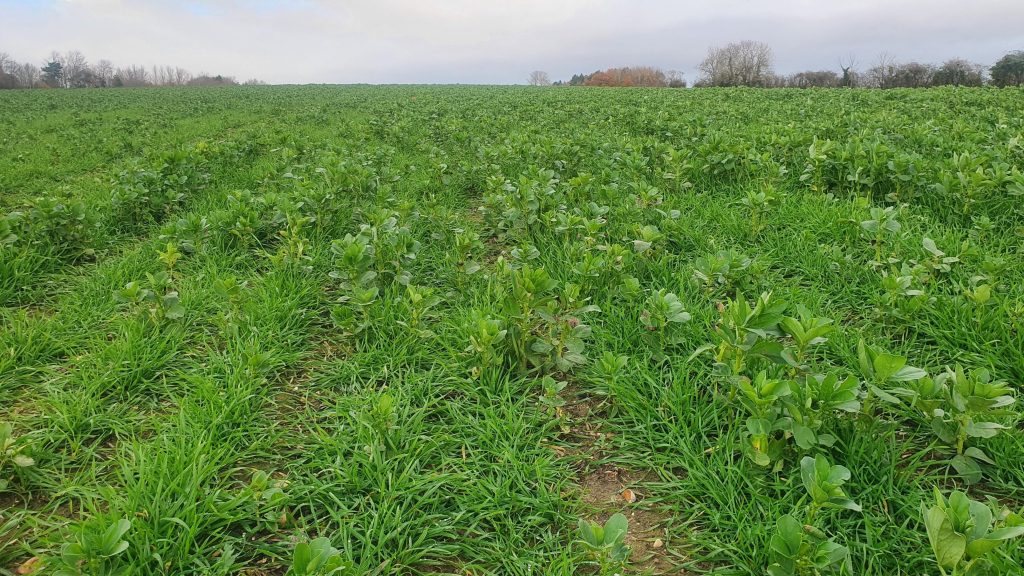
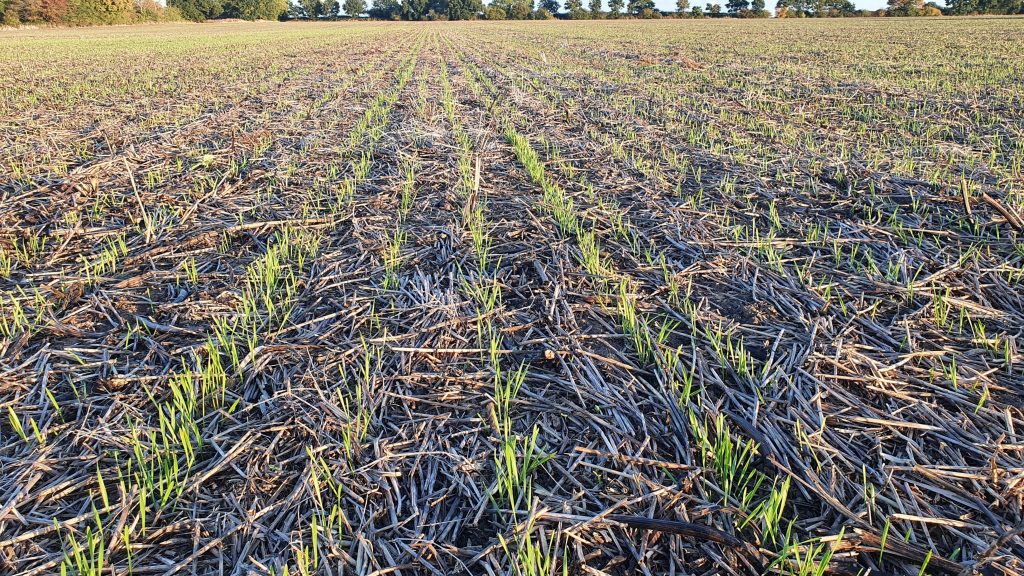
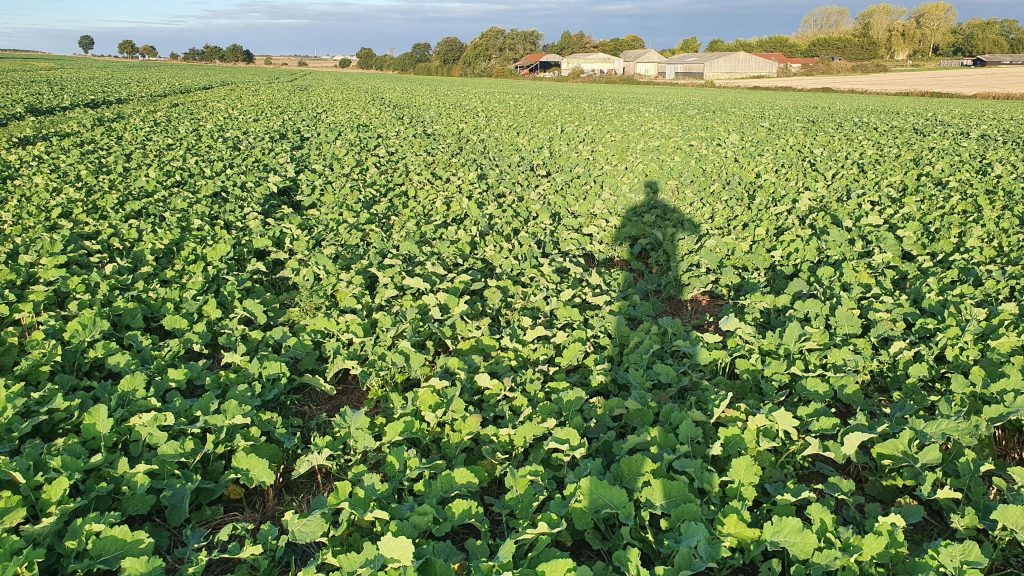
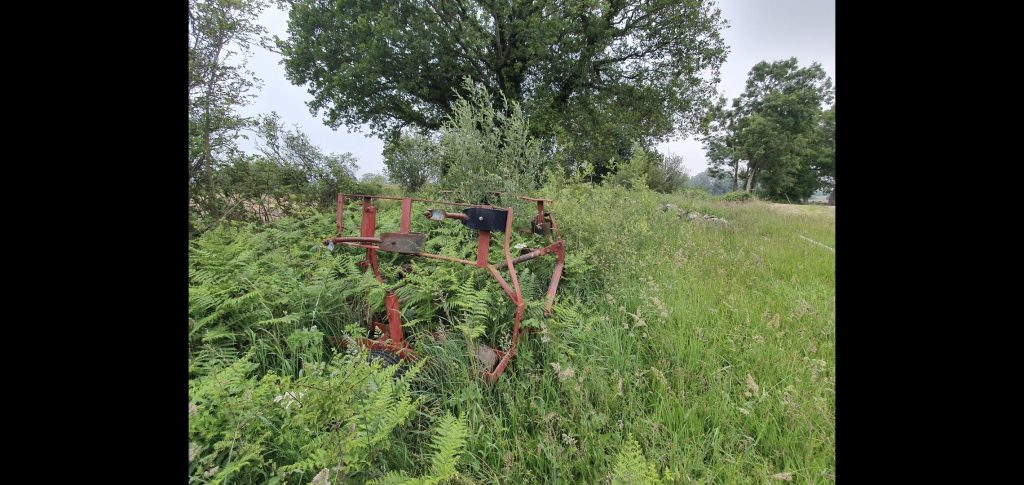
For a Direct Driller article, this column seems to contain a lot of talk about cultivation. My viewpoint has not changed and I have no intention of moving away from my low-disturbance farming and all the benefits it has brought. However I feel confident that biologically active soils with cover crops could cope with very occasional interventions such as those described above without a great deal of injury, quickly rebuilding the connections lost and filling the space created with living root. And if this slight modification to 100% DD does significantly improve yield for the same crop inputs, without messing up the land, then I for one need to know about it. Tin hat on!
Food vs Feed
Everyone reading this magazine is likely to be aware of the enormous environmental (and dare I say health?) benefits of pasture-fed meat. I am lucky enough to produce, sell and consume some of it myself, and do it with the greatest of pride and pleasure. However, we also know that in contrast, the vast majority of the world’s beef is produced by feeding grains to cattle in enormous concentrated feedlots, with a huge cost to the climate and environment (and again health?). I am firmly of the belief that farmers should grow whatever they like.
However, anyone claiming that their farming system can help save the world through GHG reduction and carbon sequestration should be ready for a bit of scrutiny over the downstream effects of their production- particularly if they are hoping to get paid for such climate friendly farming. It would be quite possible to be a direct driller and to produce 100% feed grains, and for all the carbon saved and sequestered on farm to be belched back in to the atmosphere on the feedlot. With this in mind, and with my conscience pricked by this thorny issue as I get old and soft, I have given myself a personal challenge to grow crops for human consumption as far as possible.
Wheat: As for wheat, we are not on classic milling wheat land, and the extra Nitrogen required to hit the required protein would run counter to our goal of reduced inputs, so full spec bread wheat is out. Instead I have been growing a combination of low-protein milling varieties and Group 4 soft wheats which have gone for human consumption with a small premium over feed, at no extra cost to us. We have also sold some high grain quality feed varieties into a niche market for malted grains.
Barley: Spring malting barley on heavy land is now much easier to achieve thanks to some great varieties and some high N contracts. Winter malting barley is more of a challenge, due mostly to problems controlling wheat volunteers in a no-till scenario. We are persevering and this year after a very shallow discing of wheat stubbles, followed by patience, glyphosate, and finally ULD disc drilled Flagon, we have some clean looking barley.
OSR is pretty straightforward.
Beans are a struggle due to Bruchid beetle. We don’t use insecticide to try to control it, and past experience suggests it doesn’t work anyway. The cosmetic damage the beetles cause make the beans unsaleable for human consumption and consequently downgraded to feed, even though they are perfectly fine to eat. I don’t have a solution for this, and as beans are an essential part of the rotation I will have to press on in the hope that one day consumers will want beans with holes in them, as a mark of their true regen heritage. In the meantime, any feed beans we produce are seriously low input, great for the soil and the invertebrate population, and they do at least displace soya, which must have a higher environmental footprint.

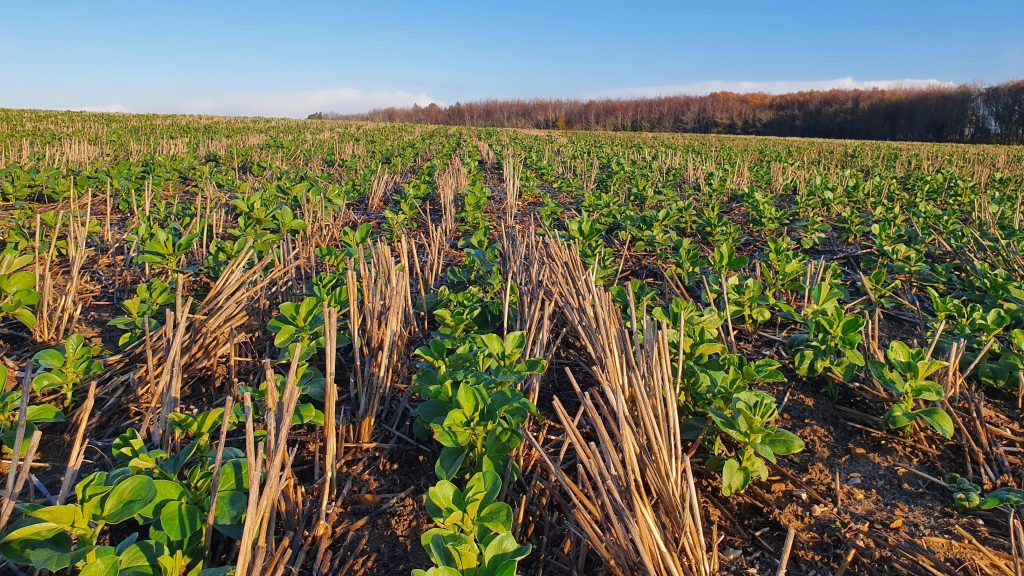
Specialist crops: we grow a variety of specialist crops such as linseed, lupins, lentils, and peas for direct sale to some fantastic customers. All of them have had some good results, but consistency is difficult (the dull 2021 harvest meant the lentils never ripened for example), and storage and handling of small volumes is always an issue. However I do much prefer growing for a particular end market which values the provenance of the product, and it is always an interesting challenge to grow something a little out of the ordinary! I hope by continuing to support these markets they will grow, and allow these crops to fill a more significant part of the rotation.
